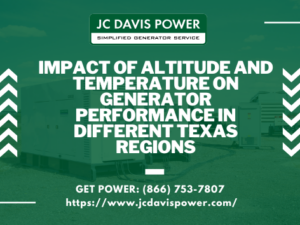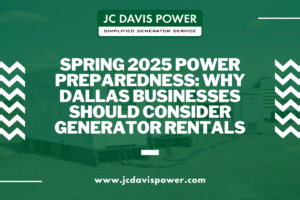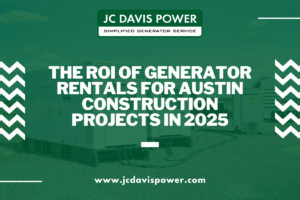Portable light towers provide critical illumination for highway construction projects. With powerful, fuel-efficient lighting fixtures, these temporary setups enhance safety and visibility across work zones while improving productivity.

What Is Mobile Tower Lighting?
Mobile tower lighting consists of diesel or electric-powered portable light towers. Featuring weatherproof metal frames and sturdy outrigger stands, the adjustable tower structures provide a raised platform for mounting high-intensity light fixtures. The self-contained units offer temporary lighting versatility for highway construction sites and access roads requiring safety standards compliance after dark.
LED luminaires and high-pressure sodium fixtures generate powerful brightness, superior lighting uniformity, and extensive coverage across large areas. State-of-the-art models utilize efficient technologies for reduced fuel consumption or clean electric power sources. Advanced control panels allow dual fuel capabilities, auto restart, multiple lighting scenarios, and remote monitoring.
Why Is Mobile Tower Lighting Necessary for Highway Construction Projects?
Work zones on highways and busy thoroughfares present numerous hazards for construction crews, inspectors, and passing motorists. Portable light towers provide critical illuminance levels to enhance safety through improved visibility and prevent accidents after sunset. The temporary setups also enable extended work hours for increased productivity.
Safety Benefits
Prevent Accidents and Injuries
Proper illumination in active construction areas helps prevent workplace incidents and collisions. Portable light towers spotlight obstacles, equipment, unfinished road surfaces, active machinery, and workers to eliminate blind spots. Visibility barriers get eliminated across project sites for safer navigation and depth perception.
- Portable light towers can be easily positioned to illuminate hazardous areas and create visibility for workers. By lighting up uneven terrain, protruding rebar, low scaffolding, and partially completed structures, injuries from trips, falls, and collisions can be avoided.
- Blind spots near large machinery and heavy equipment can be extremely dangerous. Portable lighting makes operators and ground workers aware of each other’s presence, preventing serious accidents. Areas with poor natural light especially benefit.
- Studies show that construction sites meeting industry-recommended luminosity levels have at least 30% fewer accidents and injuries. Portable towers help meet these levels for safer work zones.
Most states mandate minimum lighting standards under Department of Transportation (DOT) regulations for highway construction projects. Work zones require precise luminosity levels by zone and time of day. Portable light towers output 10 to 18 times more light than vehicle headlamps for OSHA compliance. Bright tower lighting enables crews to perform tasks safely at night.
Compliance With Mandatory Safety Standards
In addition to DOT rules, OSHA enforces stringent requirements for adequate illumination in temporary work zones. Construction sites must provide specific light intensity for general areas, equipment routes, active tasks, and inspection zones. Portable light towers meet regulated luminance levels for:
- Site ingress/egress routes – 5 lux
- General work zones – 50 lux
- Specific tasks – 100 to 200 lux
- Equipment maintenance – 500 lux
Light meter tests are conducted during OSHA inspections to check luminosity levels. Portable light towers provide adjustable brightness to meet official regulations.
Road construction companies utilize portable light towers for guaranteed compliance, avoiding violations and penalties. Bright lighting also deters vandals and copper wire thieves through enhanced visibility after hours.
Visibility Enhancements
Brightness and Extensive Coverage
Modern portable light towers provide extensive illumination for highway construction projects. Powerful metal halide or LED light fixtures generate over 110,000 lumens of brightness. Lighting towers feature telescoping masts up to 25 feet high, elevating luminaires above equipment and materials for widespread coverage across work zones.
State-of-the-art LED light towers provide superior lighting capacities plus energy efficiency. With 50,000-hour lamp lifespans, the solid-state fixtures provide consistent, uniform lighting without degradation over time. LED and electrodeless lamp models also withstand vibrations from passing traffic and machinery.
All-Weather Illumination Capabilities
Engine-powered portable light towers reliably operate in all weather conditions. Diesel-fueled generators produce continuous power for lighting systems, resisting winds up to 65 mph. Enclosed engines and alternator compartments plus weatherproof fixtures protect operational components from rain, snow, and dust.
Electric light towers offer quiet, emissions-free operation from battery banks recharged via solar panels or grid connections. Hybrid tower configurations utilize wind turbines and generators for redundancy across extended lighting projects.
Operational Efficiencies
Extend Work Hours and Prevent Delays
Portable light towers empower construction crews to continue road work after sunset and start earlier in the morning. Adequate artificial lighting facilitates tasks requiring precision like:
- Paving – Proper illumination ensures smooth and even asphalt pavement without bumps or inconsistencies that can cause ride discomfort or traffic accidents.
- Line Painting – Bright lighting allows painters to precisely apply straight highway lines, turn arrows, and other road markings essential for directing traffic.
- Infrastructure Inspections – Tower lights spotlight cracks, corrosion, and other structural defects for repair before they impact safety or traffic flow.
Bright illumination prevents weather and darkness from delaying projects through extended shifts. For example, thunderstorms often roll through construction zones during late afternoons. Instead of sending workers home early, the foreman can redirect the crew to indoor tasks like equipment maintenance or material staging. Night hours also open up for pouring concrete slabs, driving pilings, and other noisy work that disturbs residents during the day.
Continuous tower lighting also deters copper theft which has emerged as a leading cause of delays on highway construction projects. The powerful LED and metal halide fixtures eliminate dark corners and shadowed zones where thieves dismantle live conduits. Well-lit work zones keep shady characters away and enable around-the-clock surveillance against metal scavenging. Proactive security lighting preserves project momentum by preventing the headaches of replacing stolen wiring.
Equipment Options
Tower Configurations, Power Sources, and Control Features
Construction companies can choose from a wide range of portable light tower options to meet the unique needs of different work zones and budgets. Towers come in configurations to handle various terrain types and mobility requirements:
- Highway-towable trailer mounts provide easy transport between sites and maneuverability around large highway projects.
- Rough terrain wheel kits with all-wheel steering navigate uneven ground on remote construction sites.
- Folding and telescoping towers reduce the footprint with adjustable heights to accommodate confined spaces along highway shoulders or space-constrained urban sites.
Reliable power generation keeps the light towers running consistently through long shifts. Diesel engines and generators offer prime and backup power sources for uninterrupted illumination. Grid and solar-powered models provide clean, quiet electric lighting options. Dual power lights utilize wind turbines, batteries, and diesel generators for resilient operation even during grid power outages.
Advanced control panels and monitoring enable intelligent lighting automation and management. Panels facilitate pre-programmed lighting schedules by time and date to optimize usage. Remote monitoring allows operators to control and diagnose lighting systems from mobile devices for on-demand adjustments. Smart light towers continuously optimize brightness based on ambient light conditions and battery reserves to achieve the right light output while minimizing energy consumption. The automated features simplify operation and maximize utilization of portable light towers across various construction sites.
Conclusion
Portable light towers provide adjustable, high-capacity illumination for highway construction projects. Powerful lighting fixtures generate extensive brightness for increased visibility across active work zones. The temporary lighting setups enhance safety through compliance with state and federal work zone regulations. Towers prevent delays through extended shifts and weather-resistant operation capabilities. With extensive equipment options, portable light towers match unique project requirements for consistent, cost-effective illumination.
Looking for lighting tower rentals? Contact us at JC Davis Power for your next highway construction project.





